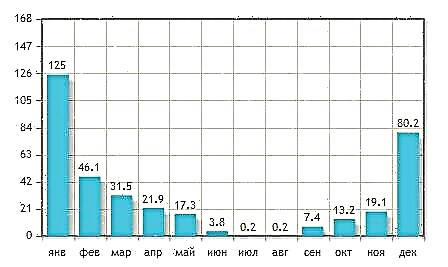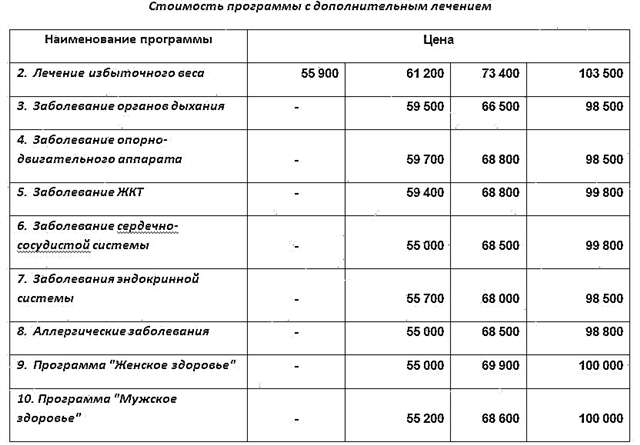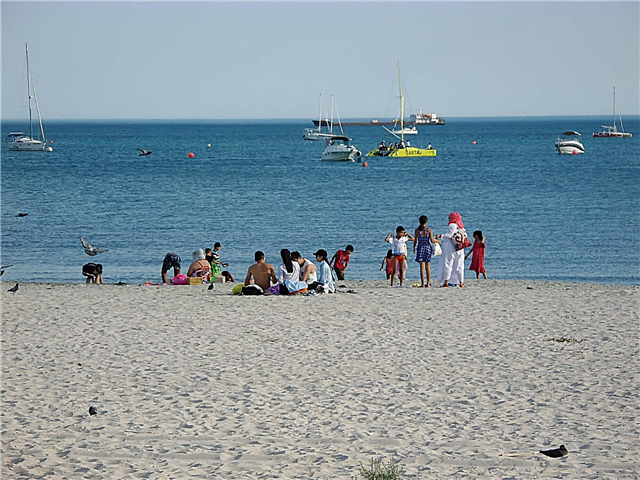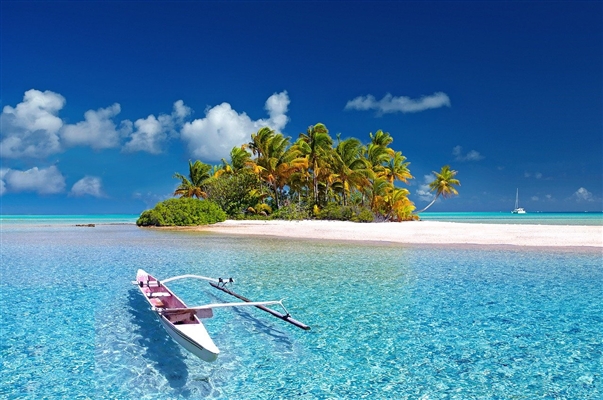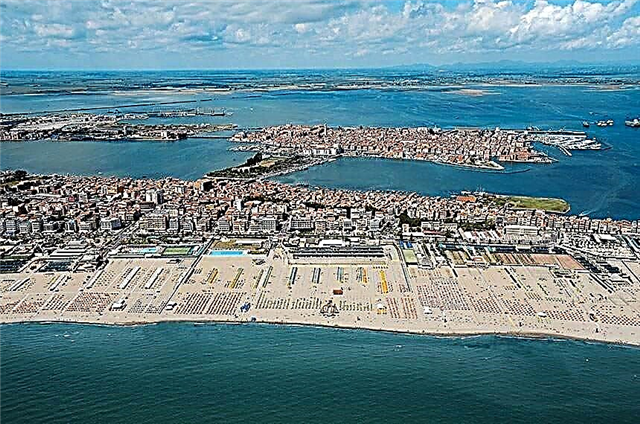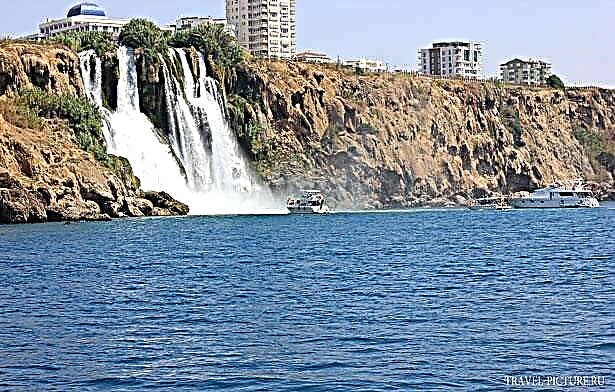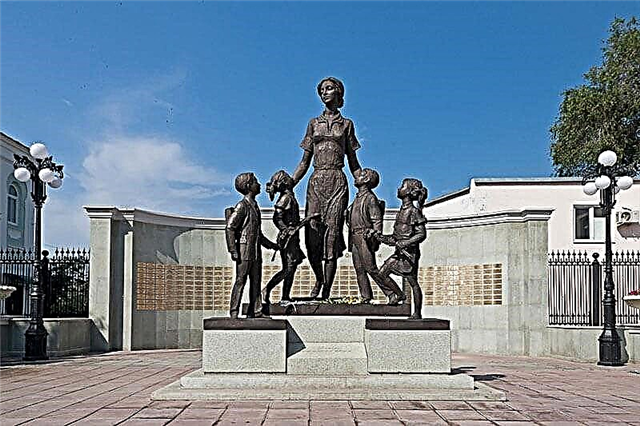For almost two decades until 1957, Orenburg bore the name Chkalov in honor of the famous pilot. Many monuments of the Soviet era are still preserved in the city. Contemporary works of street art include a monument to stray animals, which is also a collection box for donations, and a recreated historical landmark - the Elizabethan Gate.
One of the iconic places of the city is the memorial complex-museum "Salute, Victory!" It has existed in its current form since 2005, but there are also older monuments on the territory of the complex. This open-air museum exhibits, among other things, armored vehicles, artillery, infantry guns and missiles. Also, visitors to the park have access to the chapel of St. George the Victorious.
Historical and modern monuments of Orenburg
List of the most famous monuments and sculptures in the city.
"To those who fell for the Soviet Motherland"
The monument was opened in 1973 as part of the memorial. The concrete columns in the upper part are framed with a kind of bowl. Its walls are decorated with bas-reliefs. From a distance, the monument resembles a torch. An eternal flame burns at the foot. The site also has pylons with commemorative plaques. The attraction celebrates the feat of those killed during the revolution, the Civil War and the Great Patriotic War.

Monument to the Orenburg Cossacks
It has been located near the Nikolsky Cathedral since 2007. In the past, on the territory of the present park there was a Cossack settlement. It took shape during the founding of the city. The monument is massive, like the pedestal. Their total weight is 170 tons, and their height is 12 meters. It is no coincidence that the Cossack on horseback is facing the southeast: it was in this direction that the warriors went on campaigns in the 18th century.

Memorial complex "In memory of the fallen during the war"
The extensive memorial complex took several decades to complete. It includes mass graves of those who died from wounds in hospitals in Orenburg, avenues of fame and an obelisk with the Eternal Flame. The history of the monument began in 1967. The obelisk was faced with marble, and a composition was placed closer to the top: a laurel branch, a machine gun and a helmet. The next big changes came in 1985, when two walks of fame were officially opened.

Monument to I.I.Neplyuev
The first governor of Orenburg was honored with a bust in 1994. It was installed on a small column. The author of the project is the local sculptor Nadezhda Petina. In the background, after the 2013 reconstruction, a snow-white colonnade, decorated with a dedication inscription, appeared. Bronze boards are placed in two openings. Information on them is the biography of Ivan Ivanovich Neplyuev and facts from the history of the region.

Elizabethan gate
An alternative name is aquatic. Monument - reconstruction of the gate granted by Empress Elizabeth to the city for the rapid suppression of the uprising. The copy was created in 2008. There are niches in two stone pillars where sculptures of angels were placed. And on the roof, crowning the passage, there is a bas-relief with a coat of arms, a crown, weapons and royal symbols. The construction is on a historical foundation.

Monument to Yu.A. Gagarin
It is located on the avenue named after the first cosmonaut. The discovery was timed to coincide with the 25th anniversary of his flight into space. Gagarin is dressed in a flight suit, his arms are raised up. Two steles are installed on the sides. The height of the sculpture is about 4 meters. The rectangular granite pedestal is a full-fledged part of the memorial. On one side, for example, the autograph of Yuri Alekseevich is engraved.

Monument to A.S. Pushkin and V. Dal
During Pushkin's visit to the city, it was Dal, who was then serving in the provincial chancellery, who gave him an excursion. In honor of this event, a monument appeared in the central part of the city in the park named after Polina Osipenko in 1998. The sculptor is Nadezhda Petina, a native of Orenburg. Bronze figures of literary men are installed on a high rectangular pedestal, which is made mainly of granite.

"Sarmatian deer"
The monument is an exact copy of a figurine found during excavations in the Ilek region. The golden deer was presented to the city by the MegaFon company. It is believed that Scythian-Sarmatians lived on the lands of the present Orenburg region before our era. This advanced civilization left behind many curious artifacts. And deer made of gold with unusual branching antlers are among them. The sculpture was created at the Plast art plant in 2010.

Monument to V.P. Chkalov
In 1938, after the death of the pilot Chkalov, the city was renamed in his honor. At the same time, the idea to erect a large monument appeared, but it was realized only in 1953. The impressive figure of the hero adorns the embankment. Allegedly, Stalin personally made the decision on the sculpture by Isaac Mendelevich and did not find any resemblance to the prototype. That is why the attraction went to Orenburg, and did not stay in the capital.

Monument to Peter I
In 2013, a new park appeared in the city, named in honor of Peter I. At the same time, almost in the center of the walking area, a stone was laid on the site of a future monument to the tsar who cut a window to Europe. The monument itself was installed a year later. The author of the project is the metropolitan sculptor Leonid Baranov. The opening ceremony was timed to coincide with the first graduation of the Orenburg Presidential Cadet School.

"The first teacher"
During the Year of the Teacher in Russia, the idea came up to create a thematic monument. It was implemented in 2012. The composition consists of five figures: a young teacher in the center and two children on each side. The weight of the bronze sculptural group is about 5 tons. In the background is a figured wall with glittering plaques. Here are the names of the best teachers in the region.

Monument to A. Pushkin
Pushkin came to Orenburg collecting materials for his works. Among other notable corners of the area, the writer visited the Byrdu fortress, on the site of which the village of the same name is now located. In 1949, a bust of Alexander Sergeevich by Anatoly Kozyrev was unveiled here. After 50 years, the bronze monument has undergone restoration. Along the way, the surrounding square was also ennobled.

"Europe Asia"
There are several obelisks in Russia that conditionally demarcate Europe and Asia. But the very first was installed in Orenburg in 1981. At the base, on both sides, there are large inscriptions indicating the parts of the world. The height of the attraction is 15 meters. The monument is clearly visible from the bridge across the Urals. And in front of the obelisk there is a wide paved area with benches and lanterns.

Monument to V. Lenin
A monument to the leader of the world proletariat was erected in the center of the city in Leninsky Square in 1925. It was one of the first sculptures of Vladimir Ilyich that appeared in the country after his death. The monument was cast in Leningrad. Its height is about 165 centimeters, which corresponds to the real growth of Lenin. Even the pedestal is higher than the figure. An impromptu fence with chains and concrete posts was built around.

"Cat scientist"
Another Orenburg monument, indirectly associated with Pushkin. The scientist cat is the hero of the famous work of Alexander Sergeevich. The handsome bronze man was seated under an oak tree in order to more accurately convey the atmosphere of the poem. The cat is depicted in full size at the time of reading the book. The colorful landmark is dated 2013. Opposite is the regional drama theater.

Monument to Musa Jalil
In the past, opposite the city garden "Poplar" there was an alley of heroes of socialist labor. After the collapse of the USSR, it was liquidated, and a monument to Musa Jalil was erected in the vacant place in 1996. The figure of the writer was cast from bronze in Tatarstan according to the project of Kadim Zamitov. The author depicted the Hero of the Soviet Union sitting on a stone.One gets the impression that Jalil is watching the passers-by with interest and goodwill.

Monument to a homeless dog
A monument to homeless animals was unveiled on Sovetskaya Street in 2014. A bronze dog with a height of about 60 centimeters sits on a small dais and looks good-naturedly at passers-by. The pedestal in the form of a hatch is also a piggy bank. Those interested can throw coins or bills into the slot. All the money goes to help the animals left without owners. A nearby attraction is a monument to the first water supply system in the city.

Monument to L. N. Tolstoy
The metropolitan sculptor Yuri Chernov and the local architect Alexander Agafonov have created a joint project - a monument to Leo Tolstoy. He was among the first passengers to travel on the new railway in the Orenburg province. The rough stone serves as a pedestal for the sculpture of the writer. Depicted by Tolstoy in a classic style for himself and placed on the alley of the city garden "Topol" in 1994.

Monument to the Woman Janitor
In 2014, Orenburg joined other cities, where monuments to "working" professions were erected. Private funds were used to create a sculptural composition: a woman-janitor and a cat playing with a broom. The height of the monument is about 170 centimeters. It is made of fiberglass and painted in bronze. A small recreation area has been set up around, paths for walking have been made, benches have been installed and young trees have been planted.

Monument to the symbol "@"
An art object depicting the @ sign was presented to the public in 2014. He was placed on a cobbled area in the Perovsky Park: it was here that the city's first access point to free wi-fi was launched. The height of the attraction is a little over 2 meters. This unusual monument is a continuation of a large-scale project to give a modern look to the streets and walking areas of Orenburg.

Monument to P. Rychkov
The opening of a monument to one of the discoverers of these places took place in 2012. Pyotr Rychkov was a statesman and a corresponding member of the Academy of Sciences. During the expedition, he described a vast region, which included the present Orenburg region. The authors of the sculpture are Maxim Vedernikov and Alexei Vargot. The height of the monument is about 9 meters, the total weight with the pedestal is 45 tons.

Monument to F.E.Dzerzhinsky
In the biography of Dzerzhinsky there were many both glorious and contradictory pages. However, there is one initiative that is not controversial. In 1921, he created a commission to improve the lives of street children. In 1990, the local authorities of Orenburg dedicated a monument to this aspect of Felix Edmundovich's activities. The revolutionary is depicted in full growth while walking and talking with two children.

Monument to Alexander Zass
Alexander Zass is a circus strongman who received the nickname "Russian Samson". He showed his first trick in Orenburg in 1908. A hundred years later, a monument to the artist appeared near the building of the local circus. Zass did not have impressive dimensions. He compensated for the lack of height and weight with a developed training system that allowed him to lift a horse or a piano with musicians, catch cannonballs and bend iron objects.

Monument to Alexander Prokhorenko
Alexander Prokhorenko is a senior lieutenant who died in Syria. He summoned fire on himself, being surrounded. He was posthumously awarded the title of Hero of Russia. In 2017, a park was laid out in Orenburg in his honor, planting about 200 trees. A monument to the military was also erected there. The author of the project was Maxim Vedernikov, a sculptor from Chelyabinsk. He tried to convey the spirit of Prokhorenko, carefully working out the pose and facial features.

Monument to the valiant Soviet soldiers who defended the world
It has been located in the Guskov Park since 2010. The name is better known among the people - the stele of St. George the Victorious. It is his figure shimmering in the sun that is installed at the top of the column. The stele is made of stainless steel, the pedestal is granite. Many organizations of the city took part in the creation of the monument. There is a large flower bed around with a paved path in the middle.

"Children of war"
In December 2010, the first stone of the future monument was laid in the Guskov Park. Residents of the city collected funds for the sculptural composition. Bronze children's figures were cast in Yekaterinburg. The monument turned out to be laconic and touching. The opening took place in 2013. Thanks to the wide cleared area around, the attraction stands out from other objects of the walking area.

Monument to Soldiers-Internationalists
In the late 80s of the last century, veteran organizations came up with an initiative to erect a monument to the fallen Afghan soldiers. A local team of authors completed the project in 1989. As conceived by the sculptors, their "Handshake" symbolizes help to other nations. Over time, memorial events associated with all the internationalist soldiers began to take place here. The names of the heroes are carved on the plates, and the list is periodically replenished.

Memorial in honor of employees of the internal affairs bodies
Located at the intersection of Gagarin Avenue and Vostochnaya Street. A small square is named after Viktor Samokhin, a major who was killed in Chechnya. The memorial consists of a snow-white obelisk, to which stairs lead from both sides, and a colonnade. As conceived by the authors, the obelisk is the sword of the law, and between the columns there are plates with the names of local policemen who died in the service. The opening of the monument took place in 2003.

"Kind Angel of Peace"
The monument appeared thanks to the project of the same name. Its founders are the Patrons of the Century international charitable foundation. The golden angel is 3 meters high. He steps on the hemisphere, identified with our planet, and holds a dove in his hands - a symbol of peace. This composition is placed on a four-sided column. The opening ceremony took place in 2008 on the territory of the "Pride and Glory of Orenburg" complex.

"Orenburg residents - heroes of the First World War"
One of the new monuments of the city. It is dedicated to representatives of various troops who fought on the fields of the First World War. A six-meter granite stele is located in the park named after Vladyka Leonty. It is decorated with a mosaic icon of St. George the Victorious. The project was developed for several years by a whole group of sculptors and architects, including Evgeny Vargot, Yulian Davydov and Maxim Vedernikov.



